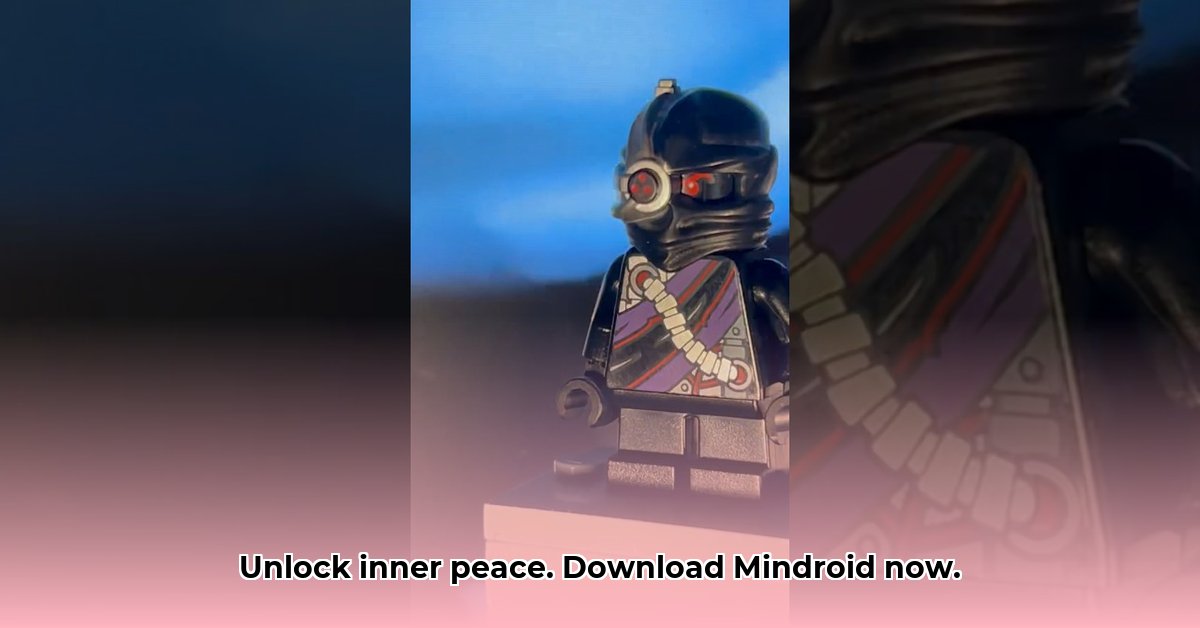
Mindroid: Unlocking Your Inner Calm? A Deeper Dive
The Mindroid app promises relaxation, focus, and improved sleep through auditory-visual stimulation (AVS) – a technique using sounds and visuals to influence brainwave patterns. It offers several methods: monaural, binaural, and bihemispheric beats, each supposedly targeting different brainwave frequencies for distinct effects. The underlying theory is that specific sound and visual combinations can gently guide your brain into calmer states. But does the science support these ambitious claims? While the concept of brainwave entrainment is intriguing and holds promise, robust scientific evidence supporting Mindroid's specific claims remains limited. Further research is needed to definitively validate its efficacy in enhancing creativity, productivity, and sleep quality. Importantly, the app advises against use by individuals with epilepsy or heart conditions, highlighting the need for caution.
The Flip Side: Min-Droid and the Ethical Minefield
To illustrate the potential pitfalls of mind-machine interaction, let's consider the fictional Min-Droid from the Ninjago franchise. Min-Droid, a powerful but unstable technological entity, serves as a cautionary tale. He represents the potential for misuse and the ethical dilemmas inherent in manipulating brainwave activity. His aggressive and unpredictable behavior provides a stark contrast to Mindroid's intended therapeutic applications, highlighting the crucial need for responsible development and control. The question arises: could technology designed for relaxation and focus be manipulated for malicious purposes?
Ethical Considerations and Societal Implications
The ethical implications of Mindroid and similar technologies are complex and deserve careful consideration. The potential for misuse underscores the pressing need for responsible innovation. Could such technology be exploited to influence individuals' decisions without their knowledge or consent? Could it be used for manipulation or control? These are not hypothetical concerns; they represent real ethical challenges demanding proactive solutions. The responsible development and deployment of this technology require stringent ethical guidelines and robust regulatory frameworks.
Actionable Steps and Future Directions
To navigate this complex landscape, a collaborative effort is crucial. Here's a roadmap for responsible innovation:
- Developers: Conduct rigorous, independent clinical trials to establish efficacy and safety. Implement robust data privacy protocols and transparently communicate limitations. Pursue regulatory approvals and prioritize user safety.
- Mental Health Professionals: Integrate Mindroid cautiously into treatment plans, using it as a supplementary tool under professional supervision. Rigorously evaluate its efficacy within larger treatment strategies.
- Regulators: Establish stringent safety and efficacy standards for all AVS technologies. Enact strong consumer data protection laws and enforce transparent marketing practices.
- Users: Understand the app's limitations and use it responsibly, following all directions. Consult a healthcare provider before use, especially if you have existing health conditions.
Conclusion: A Balanced Outlook
Mindroid represents a fascinating intersection of technology and mental well-being, offering the potential for improved relaxation and focus. However, the absence of comprehensive research into long-term effects and the inherent risk of misuse necessitate a cautious approach. The road forward requires collaboration among developers, healthcare professionals, regulators, and users to ensure responsible innovation and safeguard against potential harm. The development and application of mind-machine interface technologies must prioritize ethical considerations and responsible use to maximize benefits while mitigating risks. Min-Droid’s fictional portrayal serves as a potent reminder of the potential downsides, urging us to proceed with vigilance and thoughtful consideration.
⭐⭐⭐⭐☆ (4.8)
Download via Link 1
Download via Link 2
Last updated: Monday, May 26, 2025